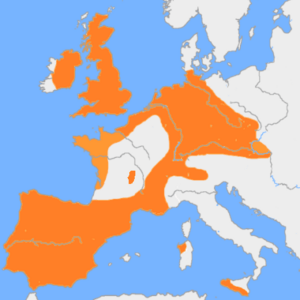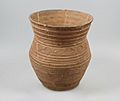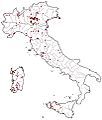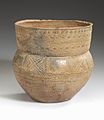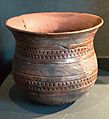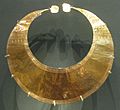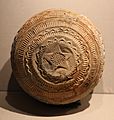Beaker culture facts for kids
The Bell-Beaker culture (also called the Beaker culture or Beaker people) is a name for a group of people who lived in Western Europe. They lived there a very long time ago, from about 2800 BC to 2200 BC. In Great Britain, they were around until about 1900 BC. We call them "Beaker" because of the special bell-shaped pots they made.
It's not fully clear if they were one single culture or just different groups who shared similar ideas.
Contents
What is the Bell-Beaker Culture?
The name Glockenbecher (bell-shaped cup) was first used around 1900. It was used by Paul Reinecke, a German historian. Other historians from Italy and Czechoslovakia had similar ideas before him.
Ideas About the Beaker People
A historian named V. Gordon Childe thought these people were like missionaries. He believed they knew how to make copper. He thought they spread from the Iberian Peninsula (modern-day Spain and Portugal). They moved along the coasts of Europe.
Another expert, Steven Shennan, believed that the special items linked to this group were for important people. These items were like fancy things for the upper class. Christian Strahm prefers to call it a "bell-shaped cup phenomenon." This is because he wants to avoid saying it was just one single culture.
How Beaker People Buried Their Dead
People from the Beaker culture had a special way of burying their dead. They often used stone boxes or chests. In the western parts of Europe, they also buried people in megalithic tombs (large stone structures) and caves. They often changed their burial customs to fit local traditions.
Burial Positions
People were usually buried in a curled-up position, like a baby before birth.
- Women were buried with their heads facing south. Their feet faced north, and their arms and legs were to their right side.
- Men were buried with their heads facing north. Their feet faced south, and their arms and legs were to their left side.
This meant that both men and women were looking towards the east when they were buried.
Where Did They Live?
We don't know much about the settlements of the Beaker culture. It's hard to find places where they lived. Only a few settlement remains have been found from that time. One is in Knowth in Ireland, and another is in Switzerland.
Other Influences
The Corded Ware culture might have influenced the Beaker culture. The Corded Ware culture was mainly found in Northern Europe.
Images for kids
-
According to Allentoft (2015), the Sintashta culture probably derived at least partially from the Corded Ware Culture. Nordqvist and Heyd (2020) confirm this.
-
Ferriby boat model and replica tools
-
Tetrapod vase, necropolis of Santu Pedru, Alghero
-
Bell Beaker from Ciempozuelos
-
Gold disks from western Asturias
-
Bell Beaker from the Czech Republic
-
Copper dagger from Brandenburg, Germany
-
Reconstruction of a halberd from Carn
See also
 In Spanish: Cultura del vaso campaniforme para niños
In Spanish: Cultura del vaso campaniforme para niños


